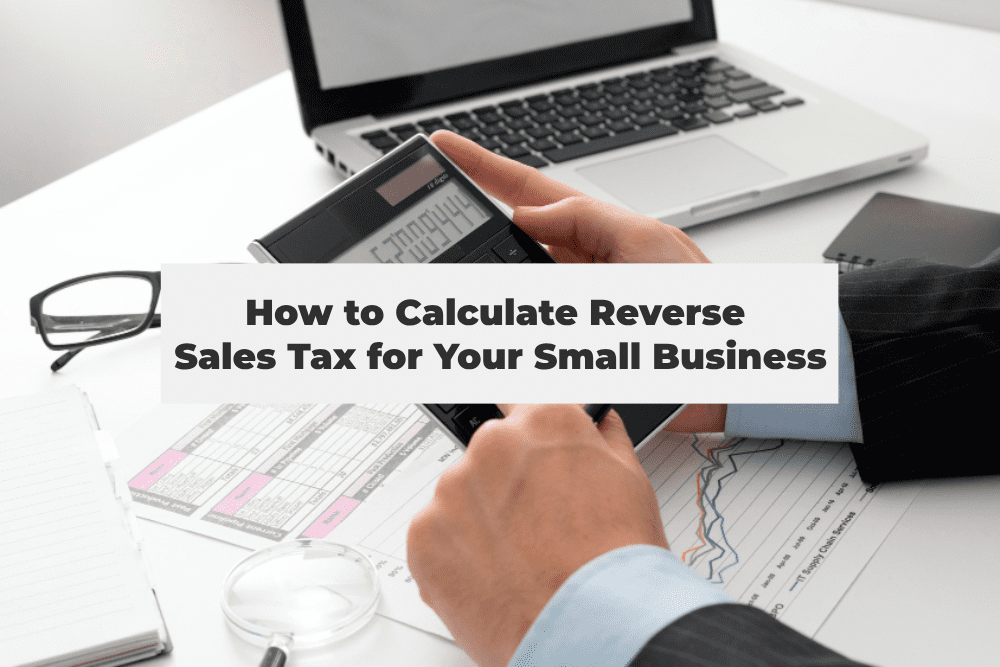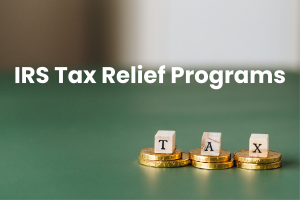When running a small business, understanding how taxes work is essential to keeping your operations smooth and avoiding surprises. One such tax concept that may confuse business owners is the reverse sales tax. But don’t worry, we’re here to break it down in easy-to-understand terms.
In this guide, we’ll cover everything you need to know about reverse sales tax, how to calculate it, and why it matters for your business. By the end of this article, you’ll have a clear understanding of what reverse sales tax is, when it applies, and how to calculate it properly.
What is Reverse Sales Tax?
Sales tax is something most of us are familiar with. It’s the tax that businesses collect from customers when they make a purchase and then pass on to the government. But what about reverse sales tax?
Reverse sales tax is a bit different. Instead of calculating how much sales tax you owe based on the price of an item or service, you’re working backward to figure out how much of the total amount paid by a customer represents the sales tax. This is especially useful when you’re trying to break down a total sales price that includes the tax, but you don’t have the original pre-tax amount.
Why Would I Need to Calculate Reverse Sales Tax?
- When you only have the final total amount, including tax, and need to know the pre-tax price.
- When your customer paid in cash, and you didn’t list sales tax separately on their receipt.
- When you’re conducting audits or reconciling sales records for your business.
- In case of state or local tax audits to show proper calculation of sales tax collected.
How to Calculate Reverse Sales Tax in Simple Steps
To calculate reverse sales tax, all you need is the total amount paid (which includes the sales tax) and the sales tax rate. The formula is simple:
Pre-tax Price = Total Price / (1 + Sales Tax Rate)
Let’s break it down step by step using an example:
Example:
Let’s say you run a small clothing store, and a customer bought a jacket for $107.00, which includes a 7% sales tax. You need to figure out how much of that $107 is the pre-tax price and how much is the sales tax.
- Find the total amount:
- Total price (with tax) = $107.00
- Sales tax rate = 7% (0.07 as a decimal)
- Use the formula: Pre-tax Price = $107 / (1 + 0.07)
- Do the math: Pre-tax Price = $107 / 1.07 Pre-tax Price = $100.00
So, the price of the jacket before sales tax was $100.00. - Calculate the sales tax: Sales Tax = Total Price – Pre-tax Price Sales Tax = $107.00 – $100.00 Sales Tax = $7.00
Now, you know that $100.00 was for the jacket and $7.00 was the sales tax.
When Does Reverse Sales Tax Matter for Your Business?
- Unclear Receipts: Sometimes, receipts only show the total amount charged, without breaking down the tax. In these cases, reverse sales tax is a useful tool for figuring out the correct sales tax amount you should report.
- Cash Transactions: If your business deals with cash transactions and doesn’t print detailed receipts, it’s crucial to know how to separate the tax from the total amount paid.
- Audits: In the event of a tax audit, the IRS or your state tax authority may want to ensure that you’ve properly collected and reported sales tax. If your records don’t clearly show the pre-tax and tax amounts, knowing how to calculate reverse sales tax can help clarify these figures.
Common Mistakes to Avoid
Even though calculating reverse sales tax is simple, there are a few mistakes that small business owners sometimes make:
- Using the wrong sales tax rate: Sales tax rates vary depending on your location and sometimes by the type of goods or services. Always double-check the correct rate for your state and county.
- Including shipping in taxable sales: Some states charge sales tax on shipping costs, while others don’t. Make sure you know the rules in your area to avoid miscalculating tax.
- Not keeping detailed records: Keeping good records is important for tax purposes, whether you calculate sales tax forward or backward. Always keep clear receipts and separate the sales tax amount whenever possible.
Reverse Sales Tax: By State
Each state has its own sales tax rules, so let’s take a look at a few key states where reverse sales tax calculations may be particularly important.
New York
New York has a base sales tax rate of 4%, but local sales tax rates can bring this up to as much as 8.875% in certain areas like NYC. When calculating reverse sales tax in New York, always include both the state and local tax rates.
Minnesota
In Minnesota, the state sales tax rate is 6.875%. Local jurisdictions can add additional taxes, so it’s important to know the full rate when calculating reverse sales tax for your customers.
Virginia
Virginia’s sales tax rate is 5.3%, but some areas have an additional regional tax. Always double-check your region’s specific rate when calculating reverse sales tax for transactions in Virginia.
Georgia
The base rate in Georgia is 4%, but localities can add up to 4% more. This makes reverse sales tax calculations a bit more complex, especially in counties with the maximum 8% rate.
((Link Suggestion: Provide a link to the state tax authority websites for reference. You could create a section with links like “Check the sales tax rates in your state” and link to states like New York, Minnesota, Virginia, and Georgia.))
Using a Reverse Sales Tax Calculator
If math isn’t your strong suit, or if you handle a lot of transactions and want to speed things up, you can use a reverse sales tax calculator. These tools are easy to find online, and you simply input the total amount and the sales tax rate. The calculator will automatically break down the pre-tax amount and the tax portion.
You can also use a simple spreadsheet formula in Excel or Google Sheets to calculate reverse sales tax for multiple transactions at once. Just plug in the formula we used earlier and let the software do the work for you.
((Image Suggestion: A screenshot of an online reverse sales tax calculator, or a spreadsheet with the formula laid out, showing how it works with sample numbers.))
Conclusion
Understanding reverse sales tax is a valuable skill for any small business owner. Whether you’re dealing with unclear receipts, cash transactions, or preparing for a tax audit, being able to calculate the pre-tax price and the tax amount ensures that your records are accurate and that you’re staying compliant with tax regulations.
If you ever find yourself stuck or unsure about reverse sales tax calculations—or any tax-related issue for that matter—our team at Taxfully is here to help. We specialize in helping small businesses navigate tax laws and optimize their financial processes. Book a free consultation today, and let us take the stress out of your tax obligations.
When running a small business, understanding how taxes work is essential to keeping your operations smooth and avoiding surprises. One such tax concept that may confuse business owners is the reverse sales tax. But don’t worry, we’re here to break it down in easy-to-understand terms.
In this guide, we’ll cover everything you need to know about reverse sales tax, how to calculate it, and why it matters for your business. By the end of this article, you’ll have a clear understanding of what reverse sales tax is, when it applies, and how to calculate it properly.
What is Reverse Sales Tax?
Sales tax is something most of us are familiar with. It’s the tax that businesses collect from customers when they make a purchase and then pass on to the government. But what about reverse sales tax?
Reverse sales tax is a bit different. Instead of calculating how much sales tax you owe based on the price of an item or service, you’re working backward to figure out how much of the total amount paid by a customer represents the sales tax. This is especially useful when you’re trying to break down a total sales price that includes the tax, but you don’t have the original pre-tax amount.
Why Would I Need to Calculate Reverse Sales Tax?
- When you only have the final total amount, including tax, and need to know the pre-tax price.
- When your customer paid in cash, and you didn’t list sales tax separately on their receipt.
- When you’re conducting audits or reconciling sales records for your business.
- In case of state or local tax audits to show proper calculation of sales tax collected.
How to Calculate Reverse Sales Tax in Simple Steps
To calculate reverse sales tax, all you need is the total amount paid (which includes the sales tax) and the sales tax rate. The formula is simple:
Pre-tax Price = Total Price / (1 + Sales Tax Rate)
Let’s break it down step by step using an example:
Example:
Let’s say you run a small clothing store, and a customer bought a jacket for $107.00, which includes a 7% sales tax. You need to figure out how much of that $107 is the pre-tax price and how much is the sales tax.
- Find the total amount:
- Total price (with tax) = $107.00
- Sales tax rate = 7% (0.07 as a decimal)
- Use the formula: Pre-tax Price = $107 / (1 + 0.07)
- Do the math: Pre-tax Price = $107 / 1.07 Pre-tax Price = $100.00
So, the price of the jacket before sales tax was $100.00. - Calculate the sales tax: Sales Tax = Total Price – Pre-tax Price Sales Tax = $107.00 – $100.00 Sales Tax = $7.00
Now, you know that $100.00 was for the jacket and $7.00 was the sales tax.
((Image Suggestion: An illustration showing the step-by-step breakdown of the reverse sales tax calculation. Start with a total amount, apply the formula, and show the difference between the pre-tax price and the sales tax.))
When Does Reverse Sales Tax Matter for Your Business?
- Unclear Receipts: Sometimes, receipts only show the total amount charged, without breaking down the tax. In these cases, reverse sales tax is a useful tool for figuring out the correct sales tax amount you should report.
- Cash Transactions: If your business deals with cash transactions and doesn’t print detailed receipts, it’s crucial to know how to separate the tax from the total amount paid.
- Audits: In the event of a tax audit, the IRS or your state tax authority may want to ensure that you’ve properly collected and reported sales tax. If your records don’t clearly show the pre-tax and tax amounts, knowing how to calculate reverse sales tax can help clarify these figures.
((Link Suggestion: Link to a guide or document from the IRS or your state tax authority explaining sales tax requirements for small businesses. You can use something like this IRS guide for more information.))
Common Mistakes to Avoid
Even though calculating reverse sales tax is simple, there are a few mistakes that small business owners sometimes make:
- Using the wrong sales tax rate: Sales tax rates vary depending on your location and sometimes by the type of goods or services. Always double-check the correct rate for your state and county.
- Including shipping in taxable sales: Some states charge sales tax on shipping costs, while others don’t. Make sure you know the rules in your area to avoid miscalculating tax.
- Not keeping detailed records: Keeping good records is important for tax purposes, whether you calculate sales tax forward or backward. Always keep clear receipts and separate the sales tax amount whenever possible.
Reverse Sales Tax: By State
Each state has its own sales tax rules, so let’s take a look at a few key states where reverse sales tax calculations may be particularly important.
New York
New York has a base sales tax rate of 4%, but local sales tax rates can bring this up to as much as 8.875% in certain areas like NYC. When calculating reverse sales tax in New York, always include both the state and local tax rates.
Minnesota
In Minnesota, the state sales tax rate is 6.875%. Local jurisdictions can add additional taxes, so it’s important to know the full rate when calculating reverse sales tax for your customers.
Virginia
Virginia’s sales tax rate is 5.3%, but some areas have an additional regional tax. Always double-check your region’s specific rate when calculating reverse sales tax for transactions in Virginia.
Georgia
The base rate in Georgia is 4%, but localities can add up to 4% more. This makes reverse sales tax calculations a bit more complex, especially in counties with the maximum 8% rate.
((Link Suggestion: Provide a link to the state tax authority websites for reference. You could create a section with links like “Check the sales tax rates in your state” and link to states like New York, Minnesota, Virginia, and Georgia.))
Using a Reverse Sales Tax Calculator
If math isn’t your strong suit, or if you handle a lot of transactions and want to speed things up, you can use a reverse sales tax calculator. These tools are easy to find online, and you simply input the total amount and the sales tax rate. The calculator will automatically break down the pre-tax amount and the tax portion.
You can also use a simple spreadsheet formula in Excel or Google Sheets to calculate reverse sales tax for multiple transactions at once. Just plug in the formula we used earlier and let the software do the work for you.
Conclusion
Understanding reverse sales tax is a valuable skill for any small business owner. Whether you’re dealing with unclear receipts, cash transactions, or preparing for a tax audit, being able to calculate the pre-tax price and the tax amount ensures that your records are accurate and that you’re staying compliant with tax regulations.
If you ever find yourself stuck or unsure about reverse sales tax calculations—or any tax-related issue for that matter—our team at Taxfully is here to help. We specialize in helping small businesses navigate tax laws and optimize their financial processes. Book a free consultation today, and let us take the stress out of your tax obligations.




